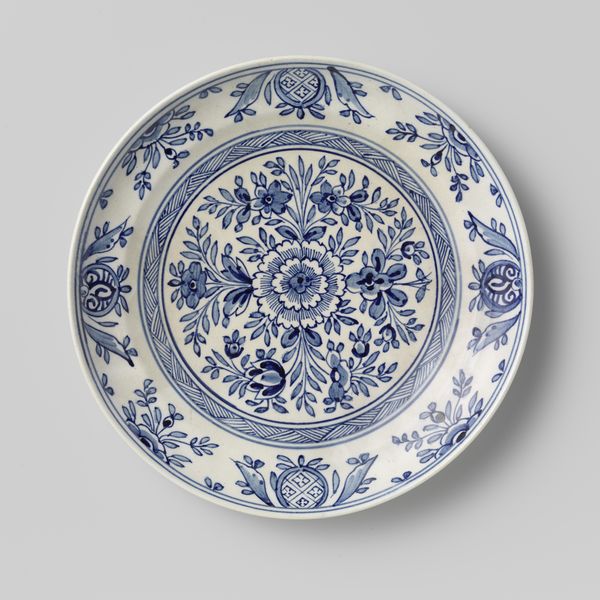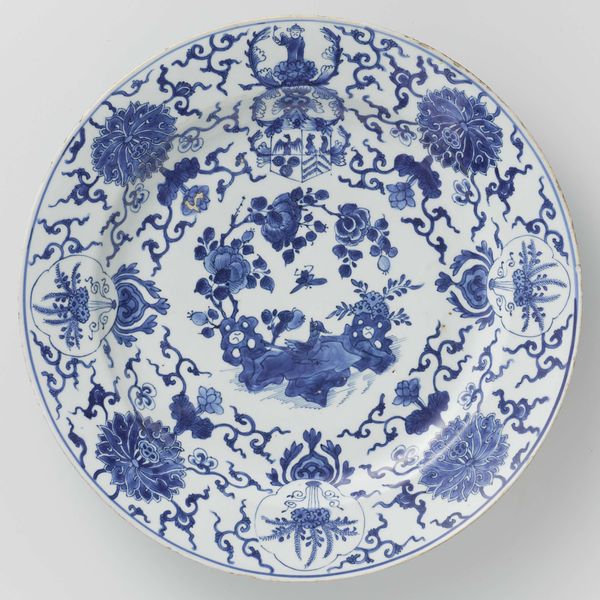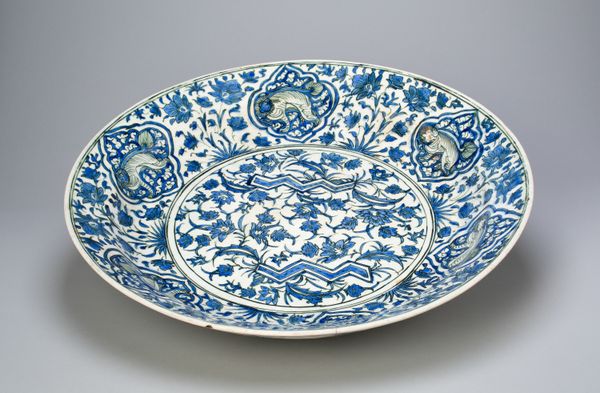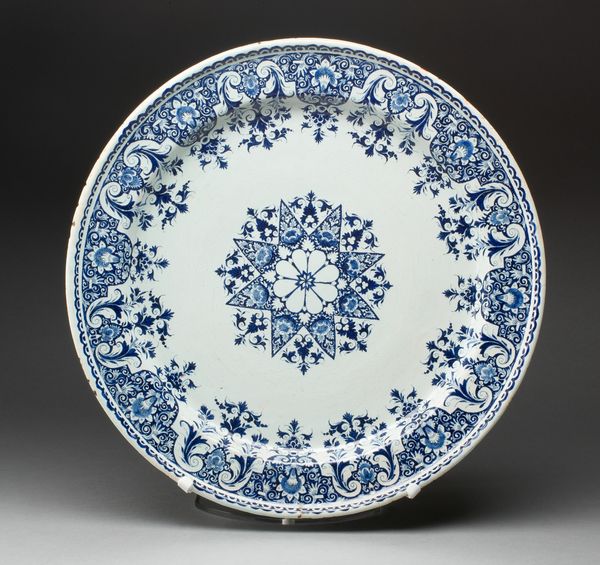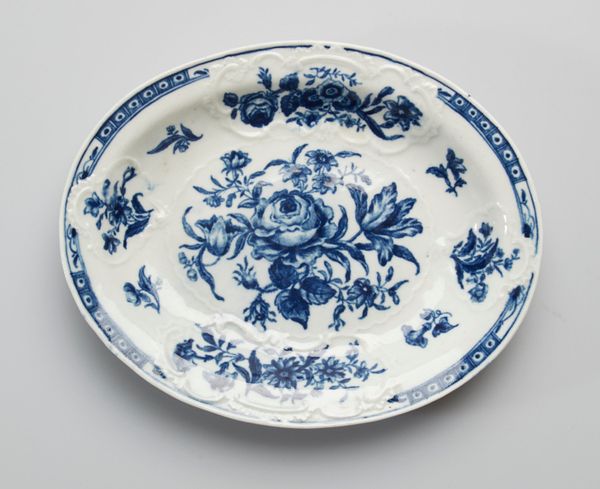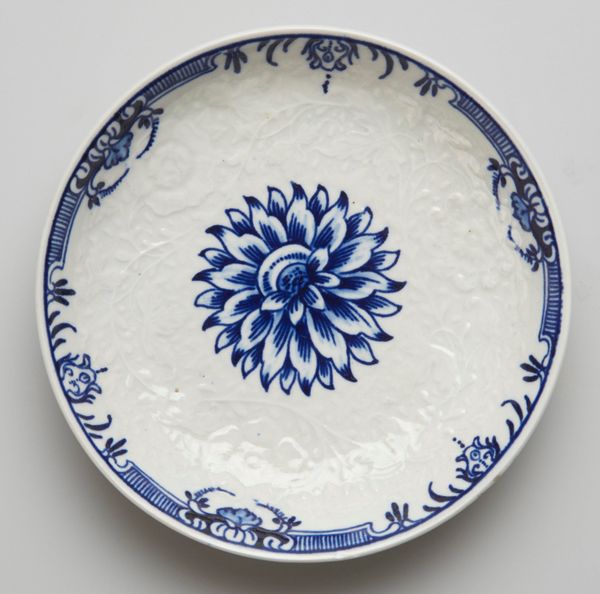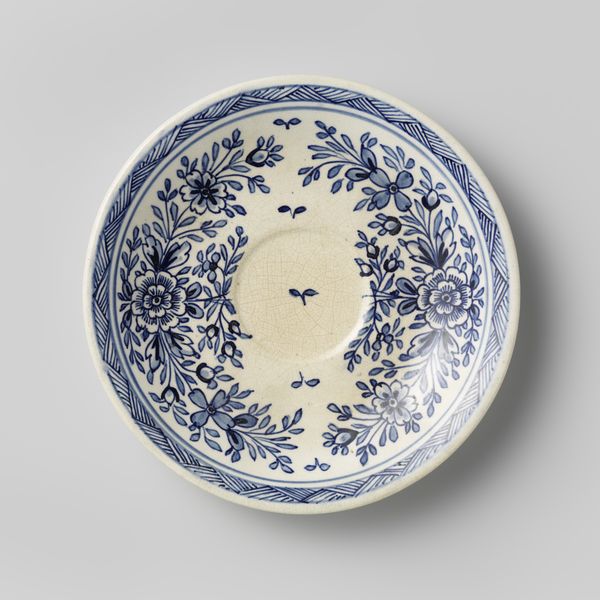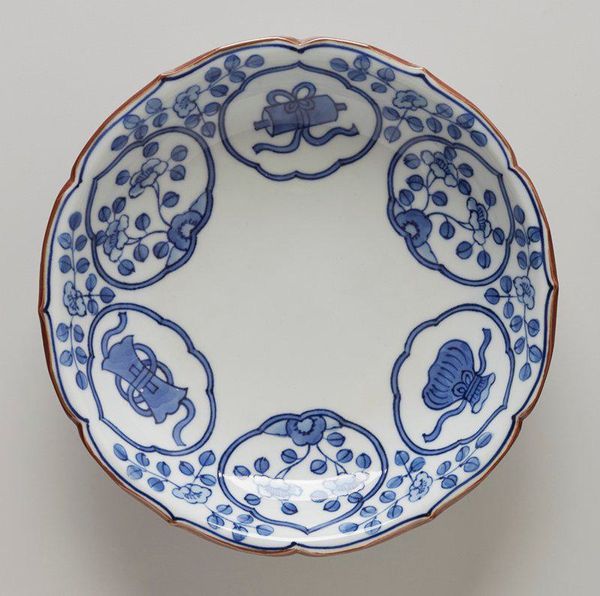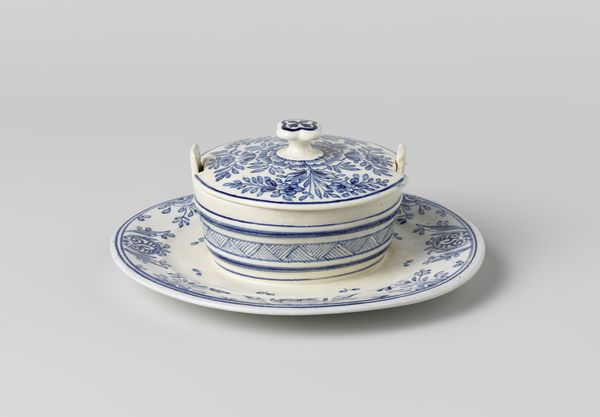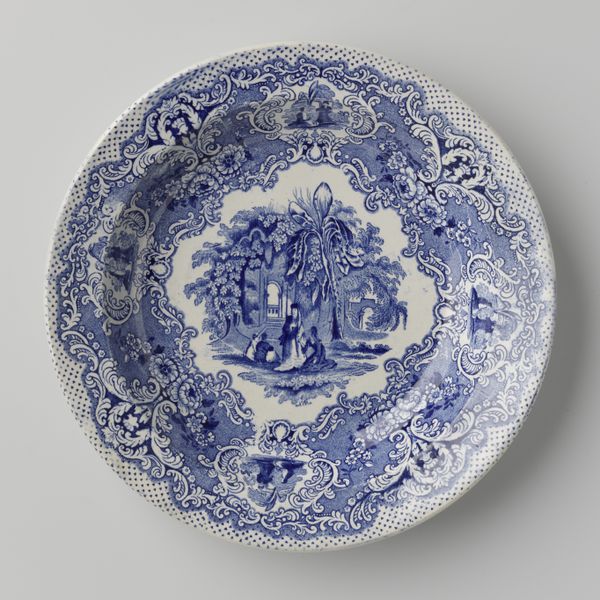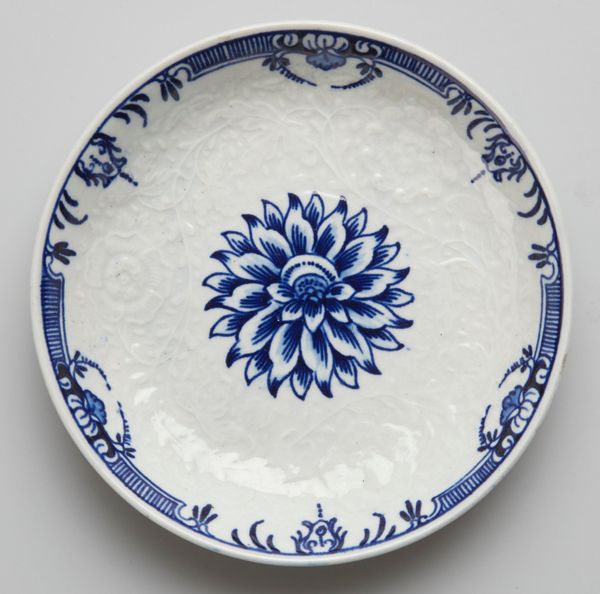
ceramic, earthenware
#
dutch-golden-age
#
ceramic
#
earthenware
#
stoneware
#
ceramic
#
decorative-art
Dimensions: height 3.5 cm, width 30.0 cm, depth 18.5 cm
Copyright: Rijks Museum: Open Domain
This oval dish with rocaille handles, now in the Rijksmuseum, was made at the De Porceleijne Fles factory, and represents a fascinating moment in the history of ceramics. The bright white earthenware body, decorated with cobalt blue floral patterns, imitates Chinese porcelain. But these relatively humble materials speak to the rise of global trade in the 17th and 18th centuries, and the Dutch East India Company’s role in that. Though seemingly delicate, the dish would have been quite robust. It was likely made by pouring liquid clay into a mold, and then carefully hand-painted. It would then have been glazed and fired at a high temperature to achieve its smooth, durable surface. The process required skilled labor and specialized knowledge, of course, but it was a far cry from the laborious hand-building of earlier pottery. Objects like this represent a crucial moment, when the handmade and the mass-produced began to meet. And by looking closely, we can appreciate how that shift has shaped the world around us.
Comments
No comments
Be the first to comment and join the conversation on the ultimate creative platform.
